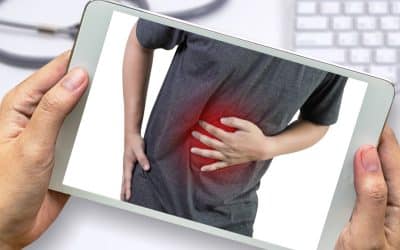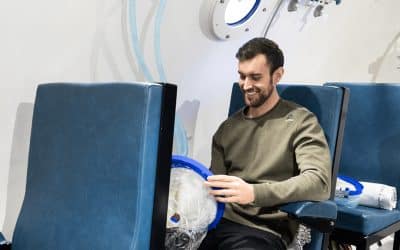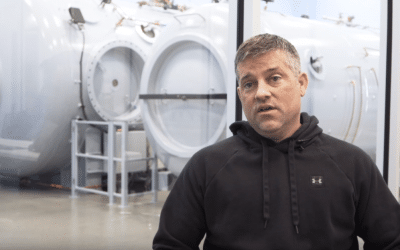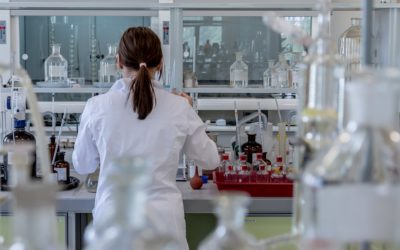Hyperbaric oxygen therapy (HBOT) can help heal bowel fistulas in patients with advanced Crohn's disease, according to a systematic review and meta-analysis. Overall, use of HBOT was associated with a 87% clinical response rate...
Crohn’s Disease
Explore the latest research on the use of Hyperbaric Oxygen Therapy (HBOT) to treat Crohn’s Disease. Extivita maintains an extensive publication database for Crohn’s Disease and various other indications with therapies such as Hyperbaric Oxygen Therapy, Neurofeedback, Nutritional IV Therapy, Infrared Sauna, and Pulsed Electromagnetic Field Therapy. Explore our database on Acne and Hyperbaric Oxygen Therapy aka, HBOT, below.
For a complete list of indications treated at Extivita, explore the conditions we treat.
Stem cell-based therapy for inflammatory bowel disease
Abstract Inflammatory bowel disease (IBD) is an idiopathic, multi-etiological disease characterized by inflammation and mucosal destruction of the gastrointestinal tract. Despite the remarkable advance in immunomodulating therapies, there still remains a certain...
Hyperbaric oxygen therapy for the treatment of perianal fistulas in Crohn’s disease
Abstract: BACKGROUND: Perianal fistulizing Crohn's disease (pCD) has a significant impact on patients' health and quality of life. Current treatment options have a relatively low success rate and a high recurrence risk. Positive effects of hyperbaric oxygen (HBO2)...
Recalcitrant Vulval and Perineal Crohn Disease Responding to Hyperbaric Oxygen Therapy.
Abstract: No Abstract Available Meah, Subramanian, Khirwadkar, Cope, Bell (2018). Recalcitrant Vulval and Perineal Crohn Disease Responding to Hyperbaric Oxygen Therapy. Journal of lower genital tract disease, 2018...
Hyperbaric oxygen therapy is an effective adjunctive treatment for severe perianal Crohn’s disease
Abstract: BACKGROUND: Perianal involvement occurs in about 30% of children with Crohn's disease (CD). Treatment of perianal CD requires a multidisciplinary approach with a combination of immunomodulatory therapy, antibiotics and surgery. Hyperbaric oxygen...
Cognitive impairment in Crohn’s disease is associated with systemic inflammation, symptom burden and sleep disturbance
Abstract Background: Patients with Crohn's disease (CD) frequently complain of cognitive difficulties such as problems with concentration and clouding of thought, yet this has scarcely been objectively defined and underlying mechanisms remain unknown. Objective: The...
Adjunctive Hyperbaric Oxygen Therapy promotes successful healing in patients with refractory Crohn’s disease.
To investigate de adjunctive effect of Hyperbaric Oxygen Therapy in a group of patients with refractory Crohn’s disease. A total of 29 subjects with refractory Crohn’s disease were submitted to daily sessions of Hyperbaric Oxygen Therapy, in a 2800 Sechrist Monoplace Hyperbaric Chamber (Sechrist, USA) pressurized to 2.4 ATA. Each session lasted 2 hours. The endpoint was closure of enterocutaneous fistulas and complete healing of Pyoderma Gangrenosum and perineal Crohn’s disease. A total of 829 HBOT sessions were performed and no complications were noted. Overall success rate was 76% (22 cases). Pyoderma Gangrenosum and enterocutaneous fistulas had the highest successful healing rates (100% and 91%, respectively).
Hyperbaric oxygen therapy for chronic antibiotic-refractory ischemic pouchitis.
Hyperbaric oxygen therapy (HBOT) has been shown to be efficacious in treating various conditions, including perianal Crohn’s disease. Here we present a case of a 59-year-old male with a history of ulcerative colitis, who underwent a total proctocolectomy and two-stage J-pouch construction. He later developed chronic antibiotic-refractory pouchitis with endoscopic features of ischemia. At the completion of HOBT-a total of 20 sessions of 100% oxygen at 2.5-3.0 atmospheres absolute for 60-90 minutes per session-a repeat pouchoscopy showed marked improvement of endoscopic mucosal inflammation. HBOT is known to increase tissue oxygenation, reduce tissue hypoxia, alter inflammatory pathways and promote tissue healing.
Inflammatory Bowel Disease: An Overview of Immune Mechanisms and Biological Treatments
Abstract Inflammatory bowel diseases (IBD) are characterized by chronic inflammation of the intestinal tract associated with an imbalance of the intestinal microbiota. Crohn's disease (CD) and ulcerative colitis (UC) are the most widely known types of IBD and have...






